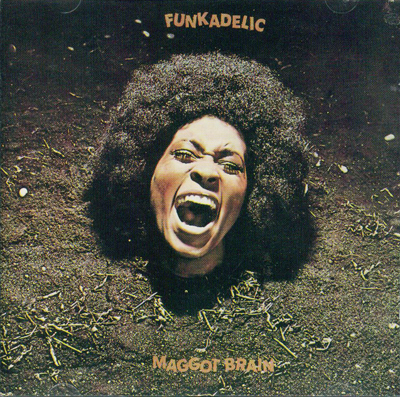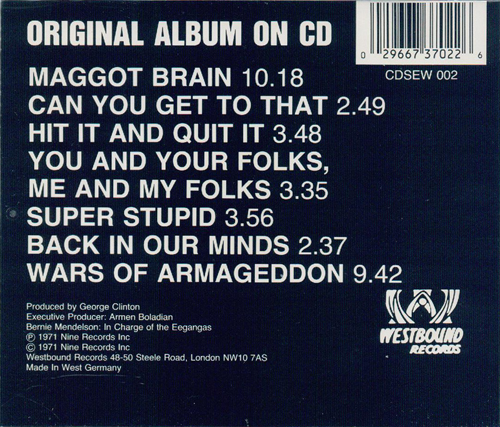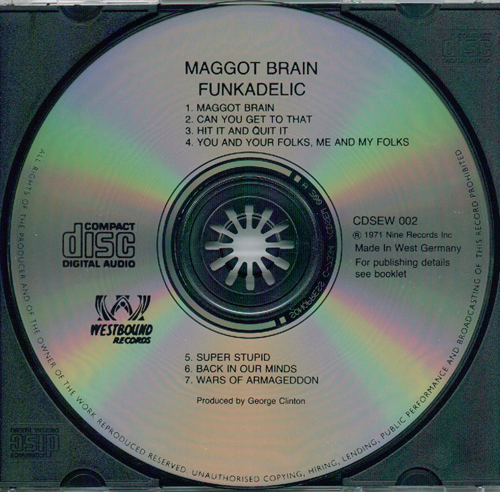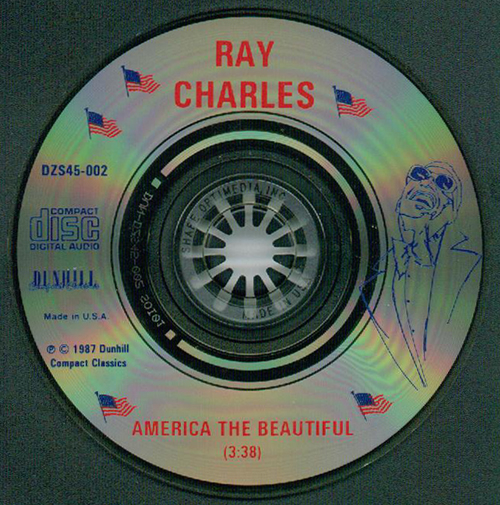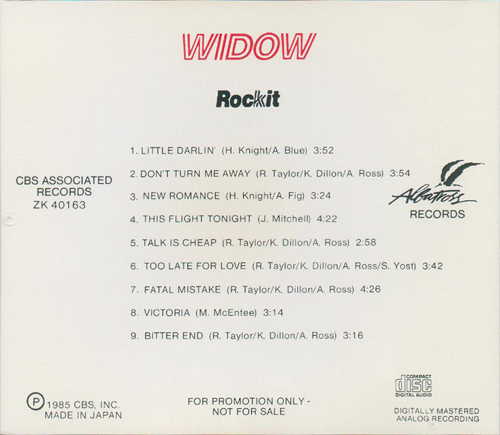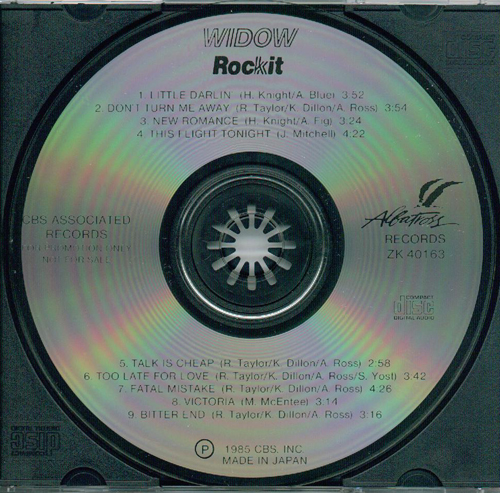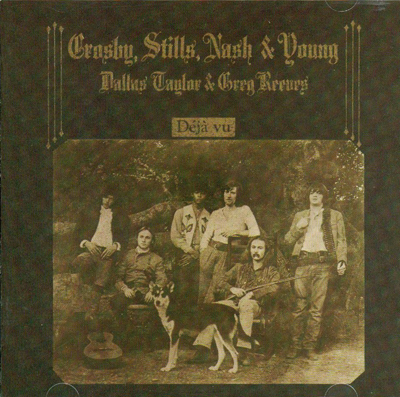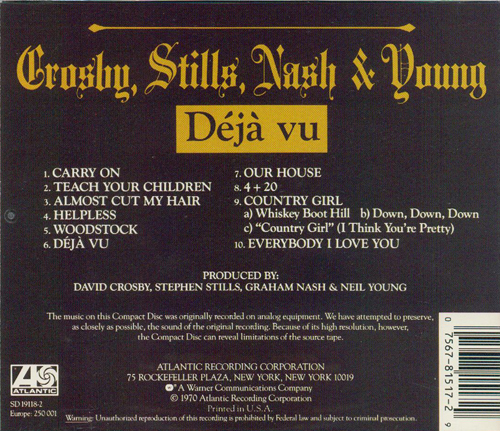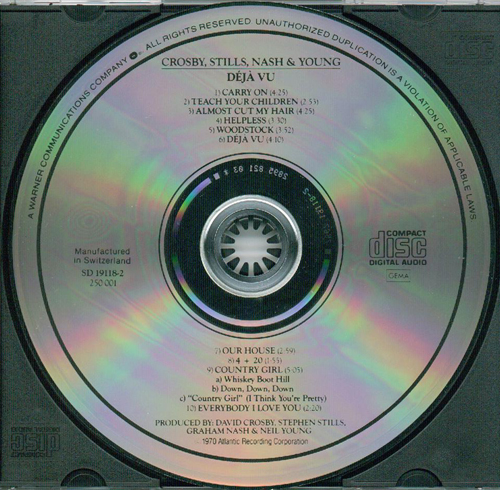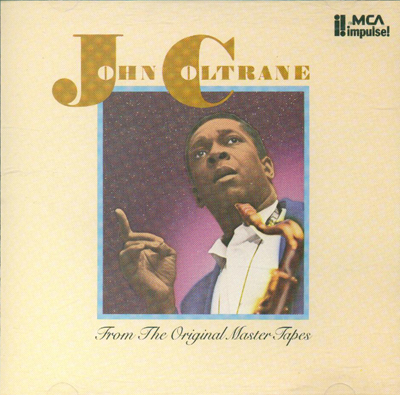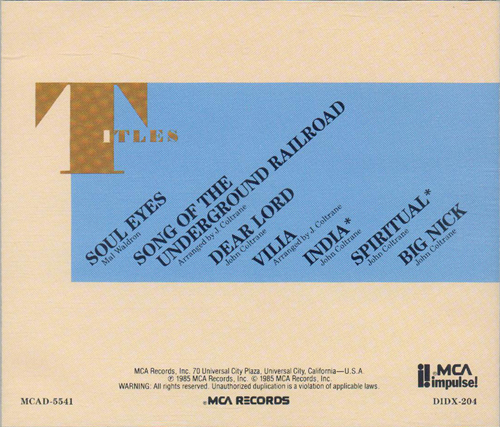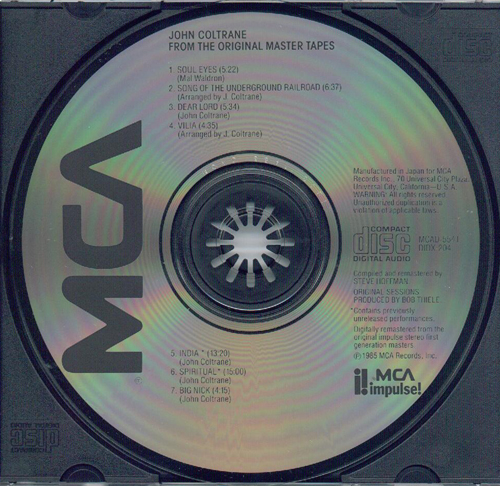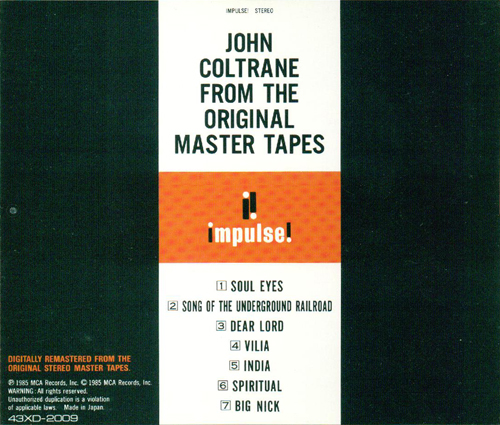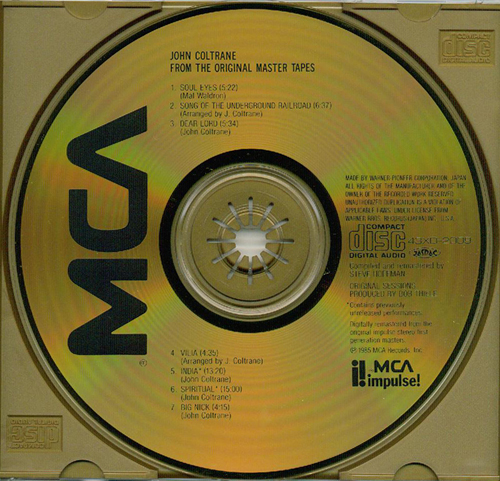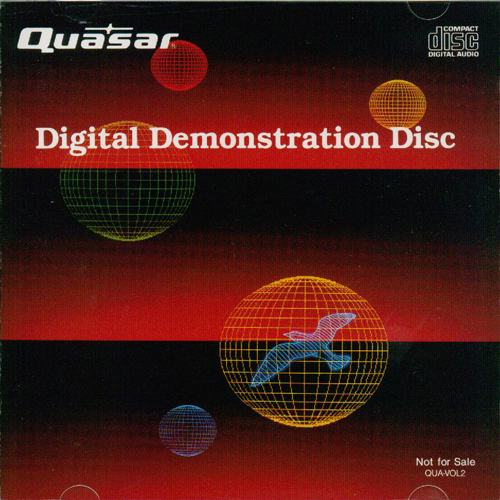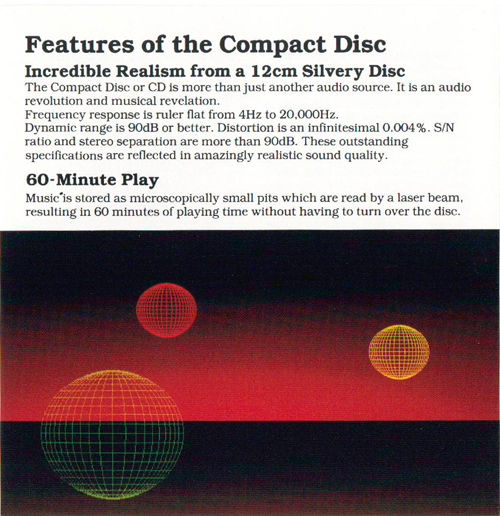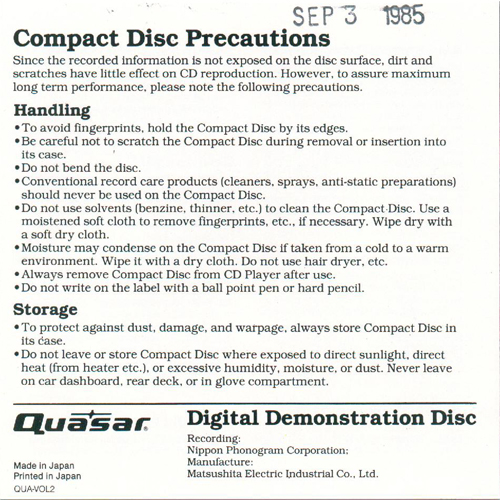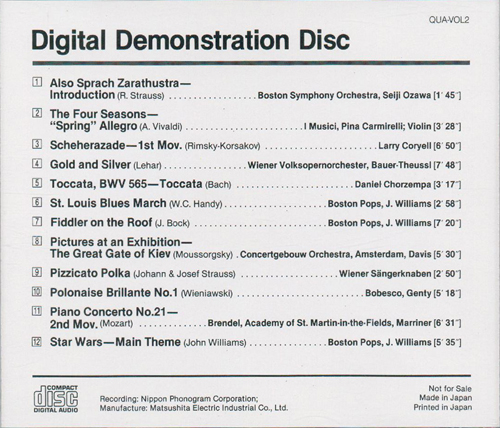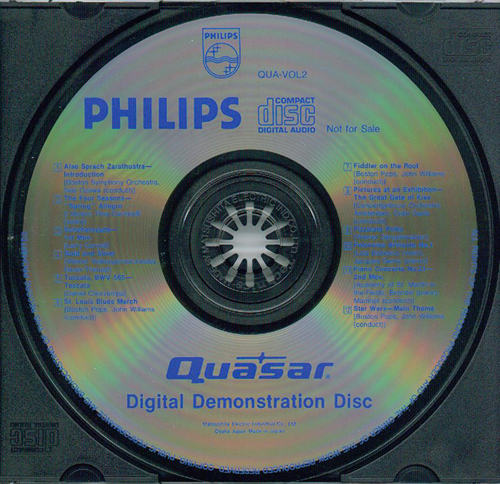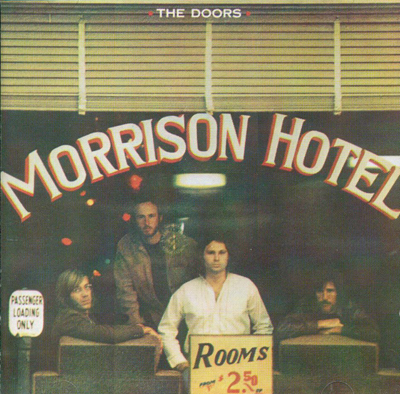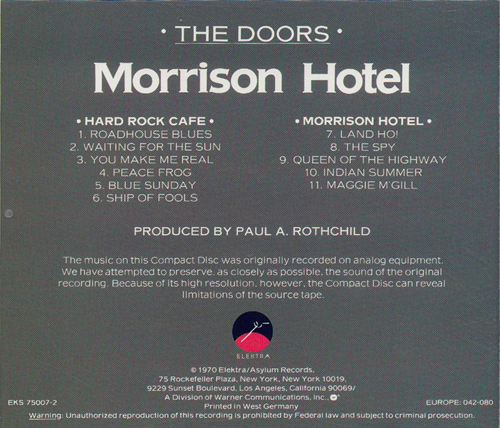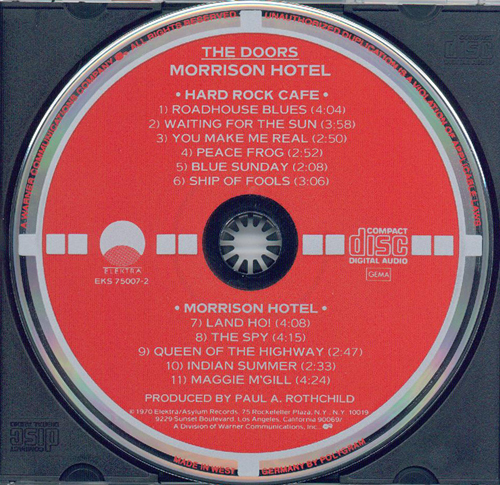online soma fedex next day delivery 1812 Overture on Telarc">Two early Japanese Matsushita pressings of Tchaikovsky’s http___www.bigleaguekickball.com_category_press_ cheap soma online consultation 1812 Overture on Telarc
November 17th, 2013
For audiophiles with a bent towards classical music, a favorite label for many years has been Telarc out of Cleveland, Ohio. Telarc has developed a reputation over the years for first-rate performances, recordings, and mastering. This began on vinyl, but starting in the 1980s, extended to CDs. For the CD collector, the earliest Telarc CDs were pressed in Japan and West Germany, with Japanese pressings being more prevalent. Early Telarc CDs were pressed primarily at two plants in Japan — CBS/Sony and Matsushita. Only a limited number of the earliest Telarc titles on CD were pressed by CBS/Sony; the majority of early titles were pressed by Matsushita. These Matsushita pressings can be broken down into two categories — early and later pressings. Some titles only exist as later Matsushita pressings, but others released around 1983 and ’84 exist as both early and later Matsushita pressings. One such example is the recording of Peter Ilyich Tchaikovsky’s 1812 Overture, performed by the Cincinnati Symphony Orchestra conducted by Erich Kunzel.
Telarc released this recording of 1812 Overture, Op. 49 on CD under catalog number CD-80041. The CD also contains performances of Tchaikovsky’s Capriccio Italien, Op. 45 and Cossack Dance from Mazeppa. In the interest of brevity, this release will simply be referred to as 1812 Overture here. In addition to the two Japanese Matsushita pressings of 1812 Overture, there is also a Japanese CBS/Sony pressing. Here, we will focus on the two Matsushita pressings. These two pressings differ in details on the CDs themselves as well as in the booklets they were supplied with. The two pressings have identical back inserts. Of the two, the early Matsushita pressing is the rarer one.
The early Matsushita pressing has “MADE BY MATSUSHITA ELECTRIC IND.CO.,LTD.” and the Technics audio logo stamped on the plastic ring. The Technics brand of audio components was owned by Matsushita at the time. The matrix code on this early pressing is “TEL CD-80041 5” and is stamped on the mirror band in small, thin characters that are typical of early Matsushita pressings.
The later Matsushita pressing has no text stamped on the plastic ring, and the matrix code is “TEL CD-80041 P”. Here, the matrix code is stamped in a larger, thicker font that is typical of later Matsushita pressings.
These Matsushita pressings were issued with different booklets. Pictures of the front and back covers of the booklets are provided below. The booklet with the early Matsushita pressing contains 12 pages, while the booklet with the later Matsushita pressing contains 8 pages. The two booklets contain the same information — liner notes by Albert Petrak, notes about the recording, and instructions for the proper care and handling of a compact disc. Interestingly, both booklets carry a warning that states “CAUTION! DIGITAL CANNONS”. Inside these booklets, the listener is warned that the cannons were recorded loud and is advised to carefully adjust the volume during playback as a result.
Shown below are the front and back covers of the booklets for the two Japanese Matsushita pressings of 1812 Overture, as well as a picture of the back insert that is common to both pressings. Finally, the two Japanese Matsushita pressings are shown.
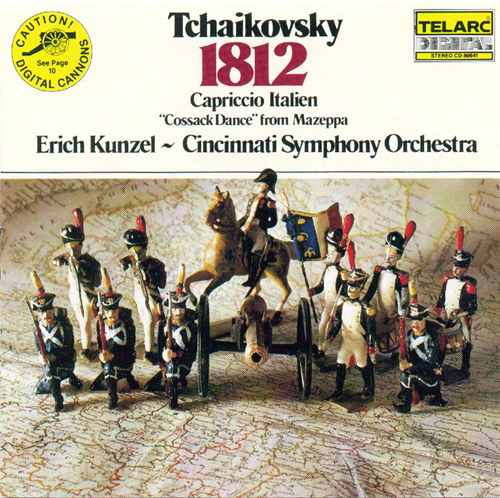
The front cover of the booklet for the early Japanese Matsushita pressing of Tchaikovsky 1812 Overture performed by the Cincinnati Symphony Orchestra conducted by Erich Kunzel (Telarc, catalog number CD-80041). This booklet contains 12 pages. As noted in the top left corner, a warning about digital cannons appears on page 10.
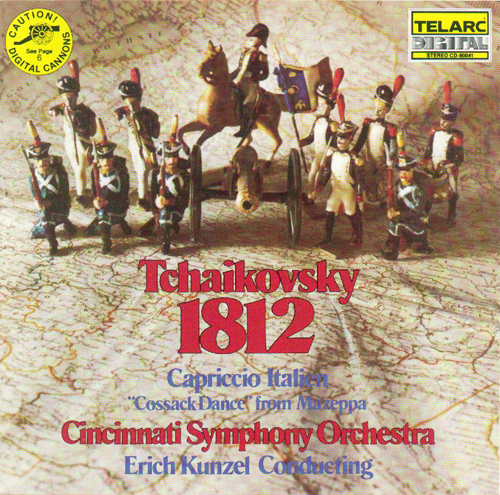
The front cover of the booklet for the later Japanese Matsushita pressing of Tchaikovsky 1812 Overture performed by the Cincinnati Symphony Orchestra conducted by Erich Kunzel (Telarc, catalog number CD-80041). Compare the artwork to the cover shown above. This booklet contains 8 pages. As noted in the top left corner, a warning about digital cannons appears on page 6.
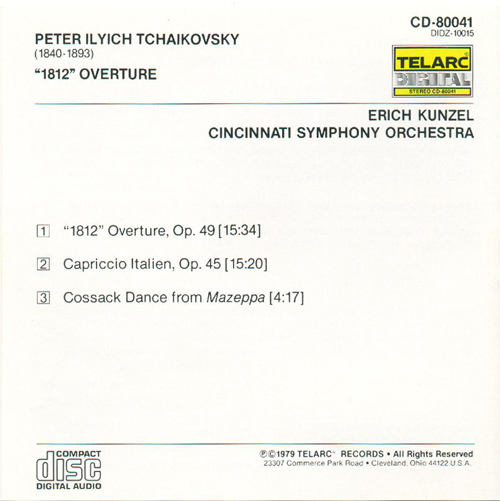
The back cover of the booklet for the early Japanese Matsushita pressing of Tchaikovsky 1812 Overture performed by the Cincinnati Symphony Orchestra conducted by Erich Kunzel (Telarc, catalog number CD-80041). There is no barcode. “DIDZ-10015” appearing beneath the catalog number in the top right corner pertains to the Japanese CBS/Sony pressing of this title, as this pressing shows the DIDZ number in the matrix code and on the label side of the disc. The discs pressed by Matsushita do not show the DIDZ number.
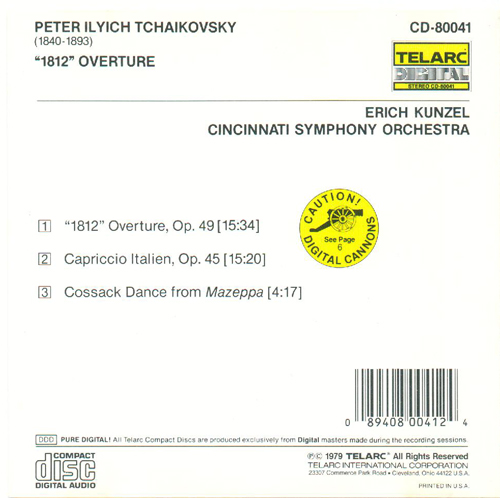
The back cover of the booklet for the later Japanese Matsushita pressing of Tchaikovsky 1812 Overture performed by the Cincinnati Symphony Orchestra conducted by Erich Kunzel (Telarc, catalog number CD-80041). Compare the artwork to the back cover shown above. A barcode appears in the bottom right corner, and the digital cannons warning has been added as well. The DIDZ number does not appear beneath the catalog number in the top right corner.
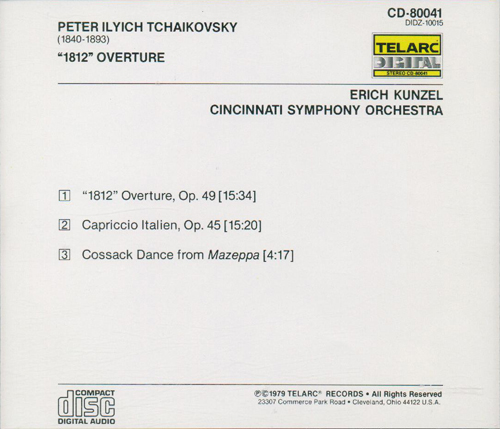
The back insert for the Japanese Matsushita pressings of Tchaikovsky 1812 Overture performed by the Cincinnati Symphony Orchestra conducted by Erich Kunzel (Telarc, catalog number CD-80041). This back insert is common to the early and later Matsushita pressings. There is no barcode. The DIDZ number appears beneath the catalog number in the top right corner.
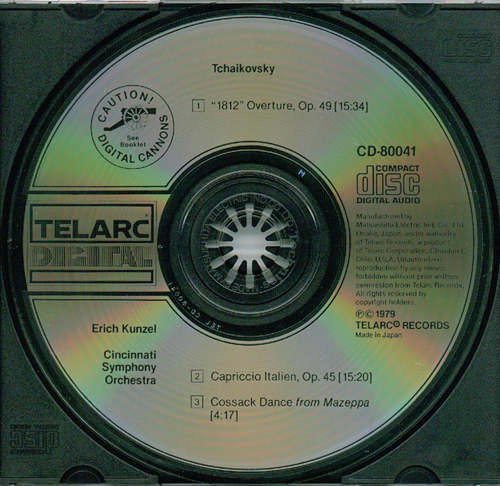
The early Japanese Matsushita pressing of Tchaikovsky 1812 Overture performed by the Cincinnati Symphony Orchestra conducted by Erich Kunzel (Telarc, catalog number CD-80041). The paragraph beneath the CD format logo at 3 o’clock states that the disc was made by Matsushita. The text “MADE BY MATSUSHITA ELECTRIC IND.CO.,LTD.” and the Technics logo are stamped on the plastic ring, and the matrix code is “TEL CD-80041 5”. The matrix code is stamped in the early Matsushita small, thin font. The ‘M’ also appearing in the mirror band stands for Matsushita.
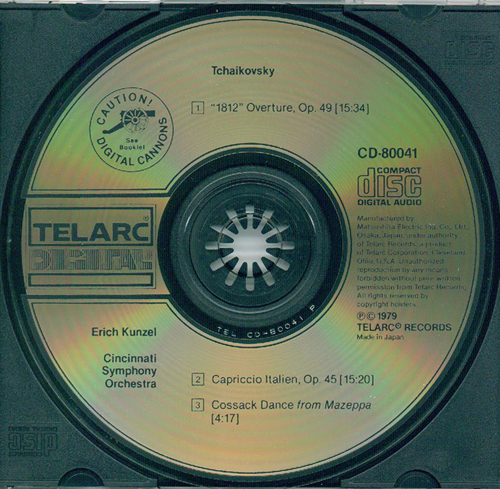
The later Japanese Matsushita pressing of Tchaikovsky 1812 Overture performed by the Cincinnati Symphony Orchestra conducted by Erich Kunzel (Telarc, catalog number CD-80041). The paragraph beneath the CD format logo at 3 o’clock states that the disc was made by Matsushita. There is no text stamped on the plastic ring, and the matrix code is “TEL CD-80041 P”. The matrix code is stamped in the later Matsushita large, thick font.
